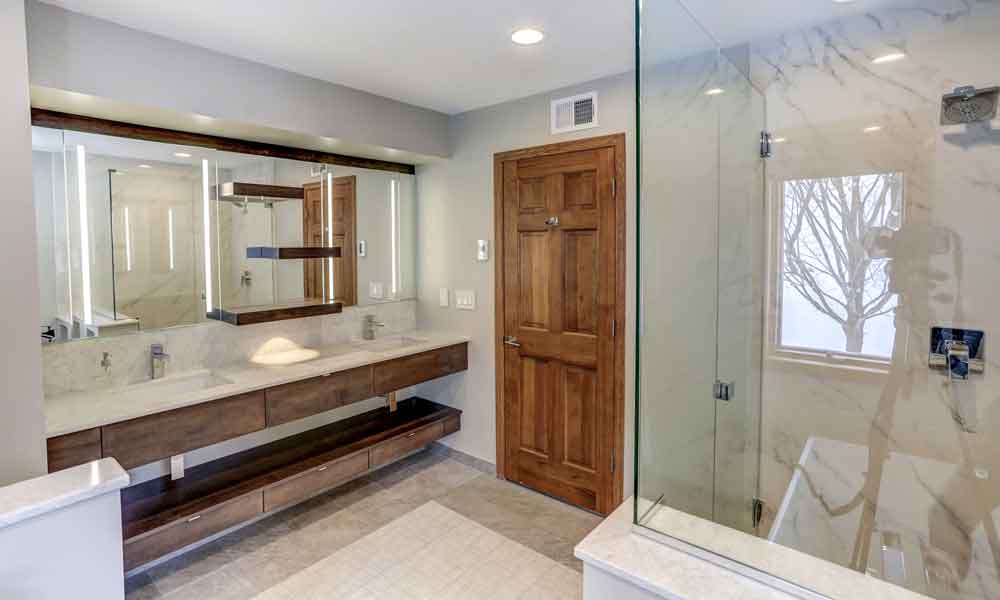When you’re building or remodeling a bathroom, you have multiple choices to make in terms of fixtures, materials, textures, colors and floor plans.
One of the most important will be the vanity you select to surround your sink and provide storage. Typically the largest fixture in the room next to the tub or shower, the vanity frequently serves as the centerpiece or focal point that sets the stage for the rest of the décor.
Because they now come in so many shapes, sizes, materials and configurations, you’ll want to consider all your options before choosing one that’s optimal for your home. As such, here are questions to think about as you shop.
What décor style are you trying to achieve?
Since bathrooms tend to be visually separated within a floor plan, many homeowners like to use them as a form of self-expression. Certainly you can try to match the decorating style of the rest of your home, using similar colors and furnishings. You can also have fun with unusual hues or avant-garde design. Either way, your vanity style should mesh with your design vision for the entire room so styles don’t clash. Granite, glass or porcelain offer fashion-forward vanity options, but if your aesthetic is traditional you may want to stick with wood or perhaps even repurpose a vintage dresser into a one-of-a-kind piece.
Do you need more storage space or move-around space?
In a tiny bath, you might pick a minimal, single-sink piece (perhaps a floating vanity?) and store cosmetics, towels and other gear elsewhere. In a larger room, a double-sink unit with plenty of under-counter storage may be just the ticket; residents who spend time at a vanity mirror fixing their hair and makeup will likely appreciate counter space and drawers. But stay mindful of traffic patterns; the last thing you want is a bathroom door that’s constantly whacking the vanity, or vanity drawers that get in the way of the toilet or shower.
Who will most frequently use the vanity and sink?
In bathrooms adjacent to children’s rooms, you may wish to lower the vanity height so children don’t need stools to wash their hands, brush their teeth, etc. Similarly, you might opt for a lower vanity and a sink with touchless faucets if you plan to age in your home.
Will the materials last a long time?
The surfaces of your vanity, countertops, sink, faucets and hardware should all be designed to resist wetness and scratching (as well as humidity, if a tub or shower is nearby). Practical choices for vanity surfaces include wood veneers, laminate and thermofoil, and hardy countertop choices include laminate, porcelain tile, ceramic tile, natural stone, concrete, solid surface, quartz or crushed glass. You’ll also want to account for maintenance; woodwork and hardware with multiple grooves and crevices can take longer to clean than pieces with smooth lines and planes. Similarly, sinks installed with lots of grouting can be hard to properly scrub.
How does your plumbing factor in?
Wall-mounted vanities tend to allow less flexibility in terms of vanity placement, while freestanding styles can often mesh with irregular or off-center existing plumbing connections.
Still uncertain about the best choice of vanity for your new bathroom? Call the specialists at Titus Contracting at 952-746-7817 for a design consultation in the Minneapolis or St. Paul areas.










